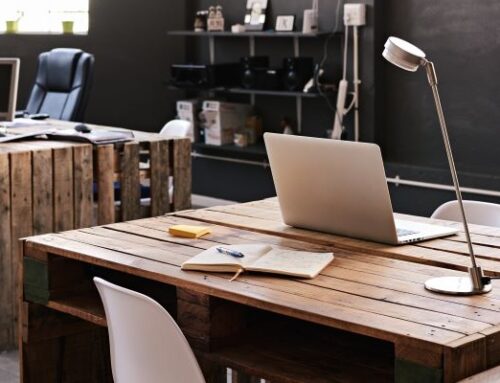Windows 10 has many new features, one of which is the ability to create virtual desktops. Although Microsoft offered this functionality in the past, it was only available as an add-on program. As a result, most Windows users are not familiar with what virtual desktops are and how to use them.
What Are Virtual Desktops?
So, what are virtual desktops? The best way to explain them is with an analogy. Suppose you are an avid do-it-yourselfer (DIYer), so you always have several projects in the works. Unfortunately, you have limited time, so you often work on several projects on the same day. This causes problems because you only have a small table to work on. When you switch between projects, you need to either stack the supplies for the other projects on various parts of the table or put the supplies away. Either way, switching between projects is a hassle and eats away at what little time you have to work on them.
A much better solution is to have multiple tables in your project room. That way, you can set up each project on a separate table or set up the tables for different types of tasks (e.g., painting, gluing). With multiple tables at your disposal, you will be more organized. More importantly, you will be able to easily switch between projects or tasks because the supplies will be at your fingertips rather than stacked or packed away.
Having virtual desktops is like having multiple tables. You can create a virtual desktop (table) for each project you are working on. In each virtual desktop, you can have the files (supplies) you need open and readily visible rather than stacked one on top of another. When you want to work on a different project, you simply switch to that virtual desktop, saving time and hassle.
You can even set up virtual desktops for different types of tasks. For example, you might run your graphics programs (e.g., Microsoft Paint and Paint.NET) on one virtual desktop and word processing programs (e.g., Microsoft Word and Notepad) on another desktop.
How to Use Virtual Desktops: The Basics
The new Task View feature in Windows 10 lets you create and view virtual desktops. To open Task View, click the Task View icon in the taskbar. Another way to open it is to press Win+Tab (press the Windows key and the Tab key at the same time). When Task View opens, you will see the “New desktop” option in the lower right corner of your screen. Click that option or press Win+Ctrl+D to add a new virtual desktop.
The current desktop will be considered a virtual desktop, so after you add a virtual desktop, you will see small images of two virtual desktops (Desktop 1 and Desktop 2) in Task View. To work in one of those desktops, click it.
When you want to switch between virtual desktops, click the Task View icon and select the desired desktop. A quicker way to navigate between virtual desktops, though, is to press Win+Ctrl+Left to go to the desktop on the left or Win+Ctrl+Right to go to the one on the right. (“Right” and “Left” are referring to the right arrow and left arrow keys, respectively.)
To close a virtual desktop, click the Task View icon and then click the close (the “X”) button above the top right corner of the desktop image. Pressing Win+Ctrl+F4 will also close the current virtual desktop.
Note that closing a virtual desktop does not close the programs running on it. Windows simply moves them to an open virtual desktop. You need to close the programs manually.
Be More Organized and Productive
If you usually have a lot of programs and files open, you will likely find the virtual desktops feature useful. Virtual desktops provide a way for you to work in a more organized and productive manner.





